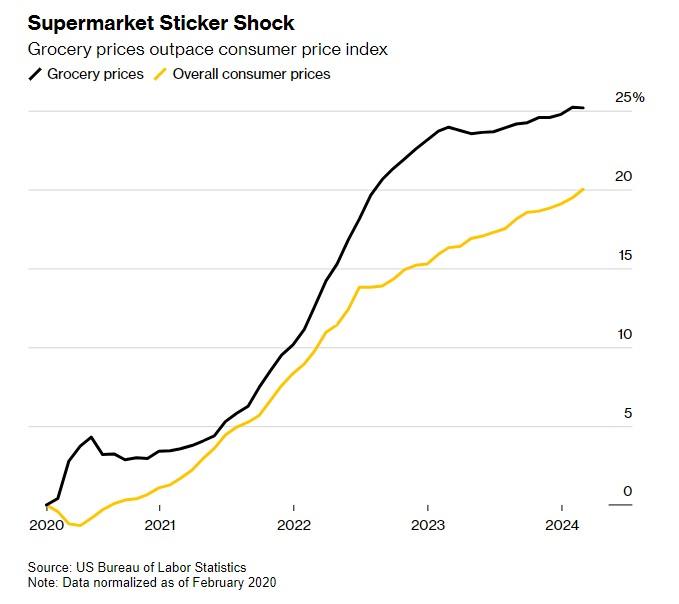
This article was originally published on The Dispatch - Policy. You can read the original article HERE
Americans are concerned about grocery prices—and for (mostly) good reasons. Yes, as we discussed in February, consumers here still—even after years of inflation—spend a relatively low share of their budgets on groceries as compared with their counterparts abroad. But that doesn’t mean the last few years have been easy for U.S. grocery shoppers. As the chart below shows, prices at your local supermarket are up 25 percent since 2020:

This trend, as Bloomberg notes, can weigh heavily on our views of the economy (aka “consumer sentiment”) because food is an obvious necessity and because—unlike a house or a car—we buy groceries all the time: “Americans’ regular trips to the grocery store—three times a week for the average US household—are a powerful driver of economic discontent, constantly reminding consumers of the higher cost of feeding a family.” It’s thus no surprise (or at least it shouldn’t be) that, even after several months of moderating food prices, grocery shopping remains at the top of Americans’ list of inflation worries:
This content is available exclusively to Dispatch members
Try a membership for full access to every newsletter and all of The Dispatch. Support quality, fact-based journalism.
This article was originally published by The Dispatch - Policy. We only curate news from sources that align with the core values of our intended conservative audience. If you like the news you read here we encourage you to utilize the original sources for even more great news and opinions you can trust!










Comments